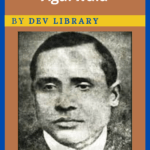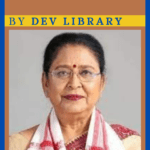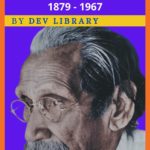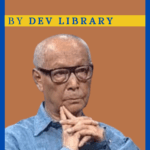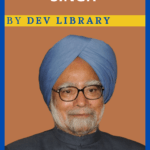Chandra Shekhar Singh Solanki, who served as the eighth Prime Minister of India for a very short period of time, was a courtesy leader. Outspoken, uncompromising in terms of ideology, socialist leader Chandra Shekhar Singh Solanki was an advocate of democratic values and social transformation and progressivism as opposed to individual worship politics. Chandra Shekhar was the first person to hold the post of Prime Minister who had never held any prior government office but with the support of very few MPs in the Lok Sabha. The government, ruled by Chandra Shekhar Singh Solanki, which took over as prime minister for nearly seven months, is termed as a “puppet” or “unfortunate”.

Biography of Chandra Shekhar Singh Solanki
| Name | Chandra Shekhar Singh Solanki[1] |
| Date of Birth | July 1, 1927 |
| Place of Birth | Ibrahimpatti, Ballia District, Uttar Pradesh |
| Education | 1/ Satish Chandra College, Ballia 2/ Allahabad University |
| Spouse | Durja Devi |
| Children | Neeraj Shekhar and Pankaj Shekhar Singh |
| Death | July 8, 2007 |
Early Life and Education of Chandra Shekhar Singh Solanki
Chandra Shekhar Singh Solanki, who played an important role in Indian politics for a long time, was born on April 17, 1927, into a Rajput family in an area called Ibrahimpatti in Ballia district of Uttar Pradesh. He belongs to a middle class peasant family.
Chandra Shekhar, who graduated from Satish Chandra College located in Ballia area in Arts stream, received his master’s degree in political science from Allahabad University in 1950. He was known as a firebrand in student politics. After completing his graduation, he became active in socialist politics.
It is to be noted that Chandra Shekhar was married to Durja Devi. Their two sons are Pankaj Shekhar Singh (eldest) and Neeraj Shekhar (junior). Neeraj Shekhar is an active member of the Bharatiya Janata Party.
Also Read: Biography of Chaudhary Charan Singh
Political Career of Chandra Shekhar Singh Solanki
Inspired by the ideals of Dr. Ram Manohar Lohia since his student days, Chandra Shekhar, the pioneer of political life, became popular as a firebrand among all due to his enthusiastic and revolutionary ideology at that time. After completing his master’s degree, he participated in the Socialist Movement and was elected as the General Secretary of the Praja Socialist Party (PSP) of Ballia district. Within a year, he was elected joint secretary of the PSPs State unit in Uttar Pradesh. Subsequently, in 1955-56, he took over as the General Secretary of Uttar Pradesh of the Samajwadi Party.
In 1962, Shri Chandra Shekhar Singh Solanki was elected to the Rajya Sabha from Uttar Pradesh. This is how Chandra Shekhar entered parliamentary politics. He came under the spell of Acharya Narendra Dev, a fiery Socialist leader at the beginning of his career. From 1962 – 1977, Chandra Shekhar was a member of Rajya Sabha, the Upper house of parliament of India. Chandra Shekhar joined the Indian National Congress in 1965. In 1968, Chandra Shekhar was re-elected to the Rajya Sabha in Uttar Pradesh from the Indian National Congress party.
In 1969, Chandra Shekhar published and edited a weekly newspaper called Young Indian from Delhi. Chandra Shekhar Singh was the chairman of the editing committee of ‘Young India.’ It is to be noted that the publication of Young Indian was discontinued during the Emergency period. However, it was subsequently republished in February 1989.
Chandra Shekhar resigned from the Rajya Sabha on March 2, 1977 after being elected to the Lok Sabha from Ballia. Importantly, except for just one Lok Sabha election i.e. the 1984 elections, Chandra Shekhar won every Lok Sabha election contested from 1977 to 2004. Chandra Shekhar Singh Solanki had won the Lok Sabha elections eight times and served as a member of parliament.
On June 25, 1975, despite serving as an active politician of the Congress party during the Congress party’s rule from 1975 to 1977, the then Prime Minister Indira Gandhi was arrested under the Maintenance of Internal Security Act and sent to Patiala jail on June 25, 1975. It may be recalled that Chandra Shekhar was one of the few leaders who had to serve imprisonment despite being a member of the ruling party during the period when the Emergency was declared. Chandra Shekhar, who did not worship individuals instead of appeasement politics, wrote ‘Dinlipi’ in Hindi during his imprisonment. This Dinlipi was subsequently published in a compiled form called “Meri Jail Diary.”
It is to be noted that Chandra Shekhar, who has always been vocal for equality for Dalit oppressors, has been involved in ideological debates with Congress leaders many times. Chandra Shekhar resigned from the Congress party in 1977 due to various ideological differences. Subsequently, he joined the Bharatiya Janata Party, which formed the government under the leadership of Chandra Shekhar and Morarji Desai. It is to be noted that Chandra Shekhar also served as the president of the Bharatiya Janata Party. But after 1977, the Janata Party could not get a majority in the general elections in 1980 and 1984. For which the Janata Party formed a coalition government under the leadership of V P Singh in 1984. But Chandra Shekhar’s relationship with the coalition government was extremely strained. For which he played an important role in forming the Janata Dal Socialist Faction by leaving the Janata Party.
Bharat Yatra
It is important to note that Chandra Shekhar started a march from Kanyakumari in the south on January 6, 1983, to establish public relations with the people and became aware of the various problems of the larger society and identify them and find a solution. The march ended on June 25, 1983, at Rajghat, the burial site of Mahatma Gandhi in Delhi. He was called “Young Trunk”. He travelled nearly 4,260 km and nearly six months.
Chandra Shekhar established Bharat Yatra Centres in various parts of the country and set up a Bharat Yatra Trust in Bondsi Village in Haryanas’s Gurgaon to focus on rural development.
Deposing V.P Singh
It may be recalled that on November 10, 1990, Chandra Shekhar was sworn in as the Prime Minister after winning the confidence motion with the support of 64 MPs and opposition leaders and a strong leader of the Indian National Congress Rajiv Gandhi, ousting the then Prime Minister V.P. Singh. Chandra Shekhar, who served as the eighth Prime Minister of India from November 10, 1990 to June 21, 1991, was the second Prime Minister after Chaudhary Charan Singh to serve as prime minister for a short period of time. Importantly, Chandra Shekhar also received support from Subramanian Swamy in forming the government with the support of the Congress.
Chandra Shekhar also served as the Minister of Information and Broadcasting, Minister of Defence and Home Affairs when he was serving as the Prime Minister. But importantly, during the prime ministership of Chandra Shekhar, the Indian economy went down further. Manmohan Singh was the economic adviser to Chandra Shekhar Amol’s government. At that time, Subramanian Swamy along with Manmohan Singh and Montek Singh Ahluwalia had prepared a series of documents on economic liberalization but could not pass in parliament because Congress withdraw support. Due to which Chandra Shekhar was then removed from the post of Prime Minister.
Conclusion
Chandra Shekhar’s importance in the active political arena after being ousted from the post of Prime Minister declined to some extent, but Chandra Shekhar managed to retain his seat in the Lok Sabha. It may be recalled that Chandra Shekhar had set up about fifteen Bharat Yatra Kendras in various parts of the country including Kerala, Tamil Nadu, Karnataka, Maharashtra, Madhya Pradesh, Gujarat, Uttar Pradesh, Haryana. It focused on how to take various welfare measures for rural development.
Chandra Shekhar, who played a key role in Indian politics and social life for a long time, died on July 8, 2007, at the age of 80, at The Apollo Hospital in Delhi while undergoing treatment.
FAQ’S
1. When and where was Chandra Shekhar Singh Solanki born?
Ans: Shri Chandra Shekhar Singh Solanki was born on April 17, 1927, in a middle-class peasant family in Ibrahimpatti, an area in Ballia district of Uttar Pradesh.
2. For What did Chandra Shekhar went for Bharat Yatra?
Ans: On January 6, 1983, Chandra Shekhar marched about 4,260 km from Kanyakumari in the south to Rajghat, the burial site of Mahatma Gandhi in Delhi, till June 25, 1983. The aim was to establish public relations with the people and become aware of the various broadcasts of the larger society and identify them and find a way to find a solution.
3. Who is our Eight Prime Minister?
Ans: Chandra Shekhar Singh Solanki.
4. When did Chandra Shekhar Singh Solanki died?
Ans: Chandra Shekhar Singh Solanki died on July 8, 2007, at the age of 80, at The Apollo Hospital in Delhi while undergoing treatment.

Hi, I’m Dev Kirtonia, Founder & CEO of Dev Library. A website that provides all SCERT, NCERT 3 to 12, and BA, B.com, B.Sc, and Computer Science with Post Graduate Notes & Suggestions, Novel, eBooks, Biography, Quotes, Study Materials, and more.


